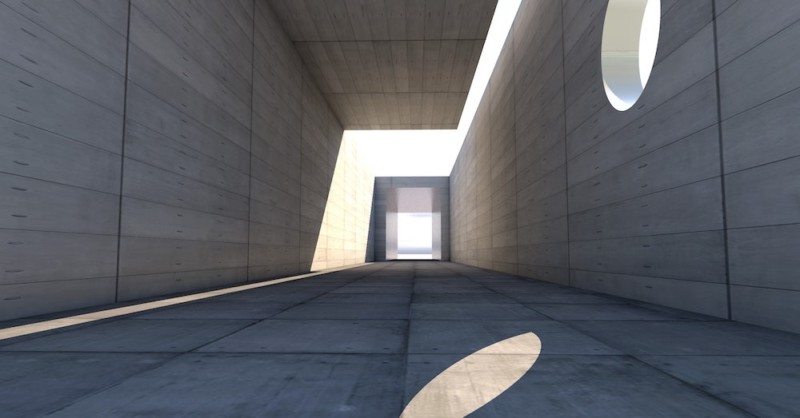Strong, versatile, and inexpensive, concrete is a fantastic building material. This is why so many structures use concrete slabs to give them a strong base upon which to build, and it’s a robust platform for the home or worksite. But what happens when these slabs get damaged? Is it possible to repair a damaged concrete slab? These questions are crucial, as they are the difference between a relatively simple concrete slab foundation repair job and a costly replacement and re-installation project.
As we explore this in more detail, we’ll examine how you can check on the integrity and safety of your concrete slab, what to look out for, and how to carry out repairs. Read on to learn more.

When to Be Concerned About Concrete Slab Damage
Any unplanned crack is a possible cause for concern. By “unplanned crack”, we mean any cracking in an area that is not designed to crack. Unfortunately, concrete does have a tendency of cracking, which is why builders will create control joints within the concrete slab. These are intentionally weaker than other areas of the slab, and so they will crack sooner. Basically, this prevents unexpected cracking in other areas of the slab.
So, any cracking outside of these areas could be something to get concerned about, but you may not need to panic just yet. Check the following:
- The width of the crack — If there is a clear gap between the two edges of the crack, this could be a sign that the structural integrity of the concrete slab is compromised. A gap of around 1/4 inch or more could be problematic.
- The sides of the crack — Even after a crack has formed, the concrete slab should remain level. If there is a difference in height of more than about 1/8 of an inch between the two sides of the crack, this suggests the concrete slab is not reinforced with rebar, and this could be a problem.
- The growth of the crack — Cracks do form from time to time, but it is worth keeping track of the crack and its progress through the slab. If the crack continues growing and spreading, or if it “crazes” into a web of smaller cracks, this could be a sign of a growing problem.
- Other structural indicators — There may be other indicators nearby that can give you more insight. For example, if the floor or foundation of the slab is bowed or subsiding, this is a serious problem. If the crack is extending into other areas, such as up the wall or siding, this may also show that the structure is compromised. There may also be signs of sagging or bowing in the roof.
Is a Cracked Concrete Slab Normal?
Not all cracks are signs of structural damage or other issues. So is a cracked slab really such a big deal? In some cases, cracking may be completely normal. We’ve already mentioned above that control joints and other planned weaknesses are designed to crack, and this is completely normal. In fact, even smaller cracks elsewhere in the concrete slab are to be expected and are completely normal.
The key is to make sure that you stay on top of the situation. Check to make sure that cracks are not spreading and that they are not becoming too wide. You’ll also need to keep an eye on the slab itself to analyze any sinking or bowing that may occur. If you do suspect a problem, it’s more cost-effective to repair this early on, as this will eliminate the need for a bigger project further down the line.
Remember, when you’re dealing with a structural issue, it’s always better to be safe than sorry. While small cracks shouldn’t cause much worry, err on the side of caution if you feel that cracks are beginning to grow or become problematic. Get an expert assessment from a concrete repair service provider if in doubt, especially if you believe the concrete slab may not be reinforced.
Concrete Slab Repair
The good news is, a cracked concrete slab can be repaired in many cases. But how exactly do you go about fixing a broken or cracked concrete slab foundation?
- Analyze the crack so you can see the extent of the damage.
- Diagnose the cause of the crack so you can prevent it from spreading or reappearing — for example, has heavy equipment been placed on the slab, or is there a structural issue in the nearby walls?
- Seal smaller cracks with polyurethane to prevent water from seeping into the structure.
- Apply epoxy resin to larger cracks to create a more structurally sound seal within the fissure.
- Wrap the slab with structural reinforcement materials, such as synthetic fabrics and carbon fiber, to increase the load capacity.
- Apply protective boards or other pieces of equipment if you think these are necessary — if you are servicing heavy-duty vehicles on the slab, for instance.
Safety Always Comes First
Concrete can, and probably will, crack. Generally, this is not too much of a worry, but you do need to make sure there is no structural damage, no water seepage, and no spreading. Use sealants and resins to close these cracks. Remember that safety needs to come first, however, and always seek an expert assessment from a concrete slab repair company if you think the structural integrity of the slab is compromised.
To learn more about fixing broken slabs and sealing cracks in concrete, check out our resource pages for further information and guidance.
